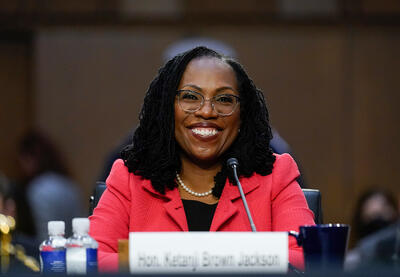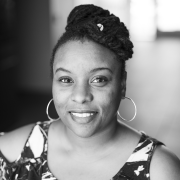Ketanji Brown Jackson’s historic confirmation to the U.S. Supreme Court has presented numerous opportunities for parents, caregivers, educators and community members to introduce new lessons or initiate discussions. Many young people watched the hearings in classrooms or hosted mock confirmation activities. But the conversations need not stop now that Jackson is preparing to serve on the court.
There is an opportunity for us all to continue talking about representation and inclusion as well as the role education must have in helping young people, particularly Black girls, imagine their “possible selves.”
First, it’s imperative that we remind our youth—inside and outside of the classroom—that we are living history every day. They are witnessing everything from social unrest, a global pandemic and sociopolitical moments like Jackson’s Supreme Court confirmation. These events surely will be included in future school textbooks about movements that shape this country. We need to empower the young people in our lives to be in this moment—to record history themselves—and to make connections between the past and the present as they chart their futures.
Generally, any Supreme Court confirmation process is an opportune time to uplift civic education and refresh our knowledge about the court’s history. In this moment, it’s critical to discuss with our youth why Jackson’s confirmation is historic. They’re seeing the first Black woman appointed to the highest court in the land and that historically white institutions are beginning to better reflect our diverse society.
However, it’s important to move beyond celebrating a “first.” It’s not that Jackson was the first Black woman in the court’s 233 years to have the skill or talent to rise to an esteemed position. We need to explain to our young people that Black women simply weren’t allowed the opportunity. As former LFJ Senior Writer Cory Collins explained, it’s important to teach the why, along with the who.
In addition to celebrating individual achievement, we must also highlight an intricate system of barriers designed to prevent such achievement. Talk with young people to ask questions about privilege, power structures and the impact “famous firsts” have on communities. Collins argues that “a list of names and facts can transform into a library of stories about the ways in which power structures have shaped our nation’s narrative, and how we can overcome them.”
On Intersectionality and Representation
Ketanji Brown Jackson’s confirmation is also an opportunity to discuss intersecting identities and oppressions. As both a Black person and a woman, her identities made her a target for extreme scrutiny not given to others, as witnessed during the recent confirmation hearings.
Furthermore, society expects people of color with intersecting identities, especially Black women, to withstand abuse to gain access to opportunities. During the recent hearings, we all witnessed this phenomenon as Jackson maintained her composure while senators hurled racist and insulting accusations her way.
That’s in stark contrast to the Supreme Court confirmation hearing for Justice Brett Kavanaugh, who, in response to questions, displayed indignant outbursts of anger. Jackson’s supporters have pointed out her long list of credentials, education and experience as compared to some on the court with less expertise.
Here, young people might pick up on the reality that Black people typically have to work “twice as hard to get half as far.” The way Jackson was treated during the confirmation hearings serves as a dramatic example of this enduring double standard.
These conversations can be helpful in the larger community and especially in school communities where children first learn how others value—or devalue—their culture and heritage. These lessons are reinforced in society at large. And it’s in these discussions that parents, caregivers and educators can learn to be more intentional about celebrating differences.
While representation certainly does matter, it’s not enough to stop there. Encourage young people to explore nuance and understand that the same systems to which people of color gain access still operate on the very foundations designed to shut them out. This is an opportunity to engage our youth to think critically about reimagining these systems even as inroads are made.
A Call to Action
Breaking barriers and countering racist or sexist attacks didn’t begin for Jackson when President Joe Biden nominated her to the court. Like many Black woman, she has had to deal with this dynamic throughout her life. In one of the hearings, Jackson explained feeling overwhelmed and isolated while attending Harvard University. There, a Black woman she did not know noticed her on a sidewalk and gave her some advice.
“I guess she knew how I was feeling and she leaned over as we crossed and said, ‘persevere,’” Jackson remembers. During that exchange, she gave young people of color the same advice. “I would tell them to persevere,” she said behind tears.
But what if young Black people in our society didn’t have to persevere in the face of racial trauma? What if adults always saw the same potential in young people of color as in young white people? What if, instead of withstanding the nonsense that stems from racist offense in schools, youth of color could simply focus on learning and achieving their goals? What if all children were supported in environments where they didn’t have to steel themselves stoically to get along or get ahead?
We must take this moment to interrogate U.S. institutions—especially schools—to create better systems devoid of hurdles that young people of color have to overcome. Parents, caregivers and educators must interrupt punitive discipline policies and other inequitable practices in schools such as tracking or ability grouping.
Working together as a community is the only way that schools should provide pathways to success for young people. Yet, oftentimes, school is where children get their first lessons in surviving a world defined by discrimination. The classroom should serve as a designated space to eliminate obstacles, not reinforce them.
Adults and young people should be allowed the space to uplift equitable practices always. Communities should celebrate difference everywhere. And everyone—educators, community members and families—must allow young people invested in an equitable society to express themselves without fear of retaliation.
Don’t limit the minds of young Black people and other youth who are often marginalized. We must all work to help them imagine themselves in spaces they might not have been able to envision before. Youth of color and all young people should be free to dream about their possible selves—including that of a U.S. Supreme Court justice.



0 COMMENTS